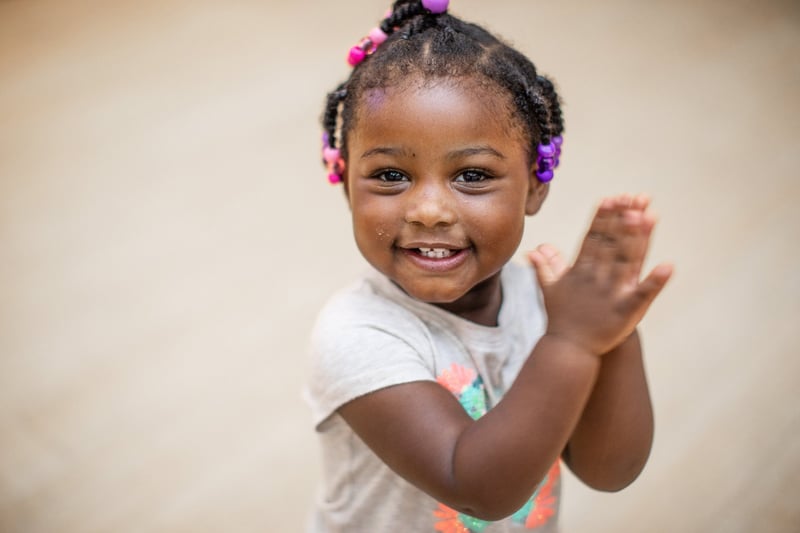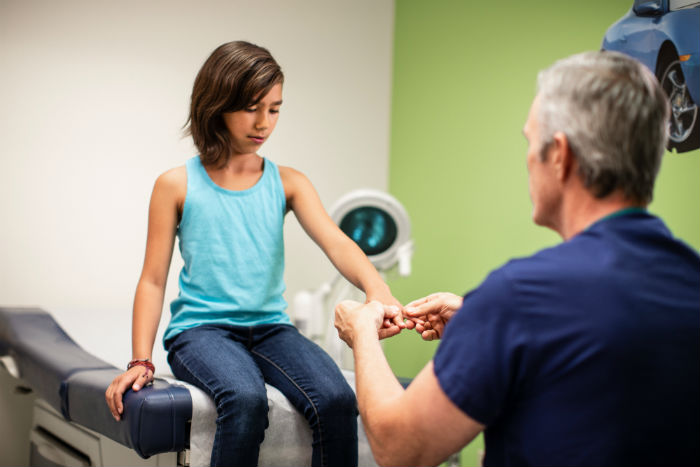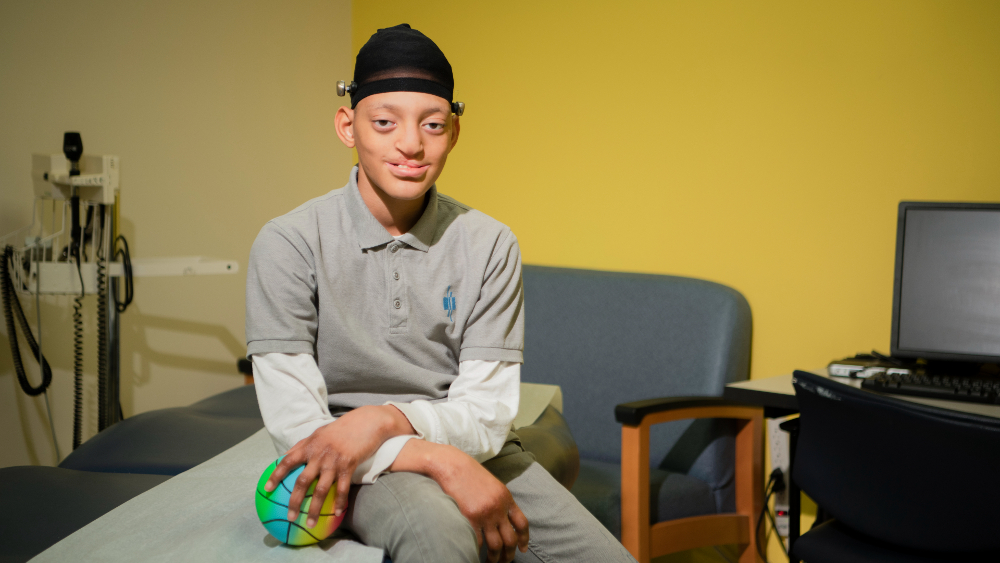Condition
Pediatric Microtia
What You Need to Know
Microtia is a condition in which a child is born with an ear or ears deformed or absent.
Key Symptoms
Common symptoms of microtia may include:
- Hearing loss
- Ear infections
- Self-consciousness
Diagnosis
Doctors typically diagnose microtia by:
- Audiogram
- CT scan
Treatment
- Reconstructive surgery
Schedule an Appointment
Our pediatric specialists provide personalized care for your child’s physical, mental and emotional health needs. Meet our providers and schedule an appointment today.
Microtia is a condition in which a child is born with an ear or ears deformed or absent. Reconstructive surgery can restore the child’s appearance and hearing.
A leader in pediatric plastic and reconstructive surgery, Children’s National Hospital has a world-class team experienced in the treatment of microtia.
Parents can be confident that Children’s healthcare professionals are working at the highest levels of competence and experience. Two of its plastic surgeons are among the handful in the country whose practice is dedicated solely to children.
The equipment and machines used in the operating room are designed for children. And because anesthesiology is one of the most worrisome parts of the surgical experience, Children’s skilled team of pediatric anesthesiologists (link to Anesthesiology main page) are outstanding, both clinically and in their relations with parents and children. Children’s is the only hospital in the area that guarantees anesthesia administered by a fellowship-trained pediatric anesthesiologist, ensuring that each child receives the best care possible.
What is microtia?
Microtia is the medical term for an incompletely formed ear. It can range in severity from a partially formed ear to a lump of tissue. Sometimes the ear canal is very narrow or missing altogether.
Microtia can affect one or both ears:
- Unilateral microtia. One ear is affected. This is the most common form: 90% of microtia cases are unilateral.
- Bilateral microtia. Both ears are affected: it occurs in one out of 25,000 births.
- Microtia occurs more often in males than in females, and affects the right ear more than the left.
What causes microtia?
Microtia is a congenital (present at birth) condition. No one knows why microtia occurs, though environmental and drug factors have been questioned. There is no evidence that the mother’s actions during pregnancy cause it. Even if one or both parents have microtia, it is not necessarily passed on to their children.
While most cases of microtia occur in isolation, the condition can be part of a spectrum of defects in syndromes such as hemifacial microsomia (link to hemifacial microsomia condition page), Goldenhar syndrome and Treacher Collins syndrome.
What are the different types of microtia?
There are four grades of microtia:
- Grade I. The ear is slightly smaller than normal, though most normal features are present.
- Grade II. A partial ear with a closed-off (“stenotic”) external ear canal producing hearing loss.
- Grade III. This is the most common form of microtia. The ear appears as a small, peanut-shaped formation of cartilage and a relatively well-formed ear lobe; the external ear canal and the ear drum are usually absent.
- Grade IV. Absence of the total ear, known as “anotia.”
What problems are associated with microtia?
Hearing loss. Beyond the apparent visual deformity of the ear, children with microtia often experience some hearing loss due to the closure or absence of the external ear canal. This hearing loss can affect how the child’s speech will develop.
Ear infections. Children with microtia may also have ear infections.
Self-consciousness. Even if a child doesn’t suffer hearing loss, feelings of self-consciousness may develop. Children usually become aware of differences in their bodies around ages 4 or 5. By the age of 6 or 7, children may tease other children who do not look “normal.” The child with microtia may feel self-conscious and inadequate.
How is microtia diagnosed?
If a child is born with microtia, there should be an early evaluation of the ear’s organ systems and the child’s hearing. The first consultation with physicians should be shortly after birth, so parents can understand the treatment options for their child.
Unilateral microtia. In unilateral cases, children generally retain full hearing in the unaffected ear, while still retaining some hearing on the affected side. Even if the ear canal is closed, sound can be absorbed into the still-functioning inner ear. An audiogram (link to glossary) should be performed within the first few months of life. This test should be repeated at yearly intervals. A radiologist will evaluate the middle ear structures and ear canal using a CT scan (link to glossary).
Bilateral microtia. In bilateral cases, children are at risk of greater hearing loss, which can lead to poor speech development. Children with bilateral microtia require earlier intervention. An audiogram is recommended within the first few days of life, ideally before the patient is discharged from the hospital after birth; the test should be repeated until consistent results are obtained. A CT scan will evaluate whether the middle ear structures can be surgically reconstructed. Children with bilateral microtia often use bone-conducting hearing aids before undergoing surgical treatment.
Treatment
Because of microtia’s potential to lead to psychological problems as children get older, reconstructive surgery is recommended in most cases. Good results improve children’s confidence and self-esteem.
Children’s National Hospital, a leader in plastic and reconstructive surgery for children, has in-depth experience in evaluating and treating microtia, from the initial assessment through surgery and post-operative follow-up. A team of physicians drawn from many different disciplines will draw up an individualized plan of treatment for each child.
What does treatment of microtia include?
From the time the child is first seen at Children’s for initial evaluation, families are offered appointments to check the child’s progress and provide updated advice on treatment.
Surgical treatment of unilateral microtia
Patients with unilateral microtia usually don’t require a hearing aid, and speech development is normal. Surgical correction of the ear usually starts at age 5, when the ear is 85 to 90 percent of its adult size. Optimally, surgeons prefer to construct the ear as completely as possible before a patient reaches first grade, as children tend to begin being teased more by their peers at that age. However, surgery may be performed earlier or later, depending on the patient’s rate of development.
The surgery is done in a series of staged ear reconstructions, separated by about six to 12 months.
Stage 1. Surgeons extract part of a rib from the child and use it to sculpt the framework for the reconstructed ear. Stage 2. Surgeons form the ear lobe. Stage 3. Surgeons elevate the ear using a skin graft. Stage 4. Surgeons form the tragus (the cartilage that partially covers the opening in the external ear) using a skin/cartilage graft and form the conchal area (the hollow area leading to the middle ear canal) using a skin graft. Surgical treatment of bilateral microtiaBilateral microtia patients are operated on earlier, at about age 4, because they have greater hearing loss that needs to be corrected as soon as possible for normal speech to develop. Also, surgeons can former smaller ears using less cartilage from the ribs, as they do not have to match the size of a normal ear in patients with bilateral microtia.
In bilateral patients, the outer ear must reconstructed first before opening the ear canal.
The surgical process is somewhat different from that of unilateral microtia, because surgeons cannot operate on both sides at once during the first stage. For the first stage, rib grafts for each ear are separated by four-six weeks. The next three stages can occur simultaneously. Then after another six-12 months, surgeons can opt to drill the ear canal to improve hearing.
Meet the Providers Who Treat Microtia
Departments that Treat Microtia

Rare Disease Institute - Genetics and Metabolism
Children's National Rare Disease Institute (CNRDI) is a first-of-its-kind center focused exclusively on advancing the care and treatment of children and adults with rare genetic diseases.

Help Kids and Make a Difference
Invest in future cures for some of life's most devastating diseases. Give today to help more children grow up stronger.









